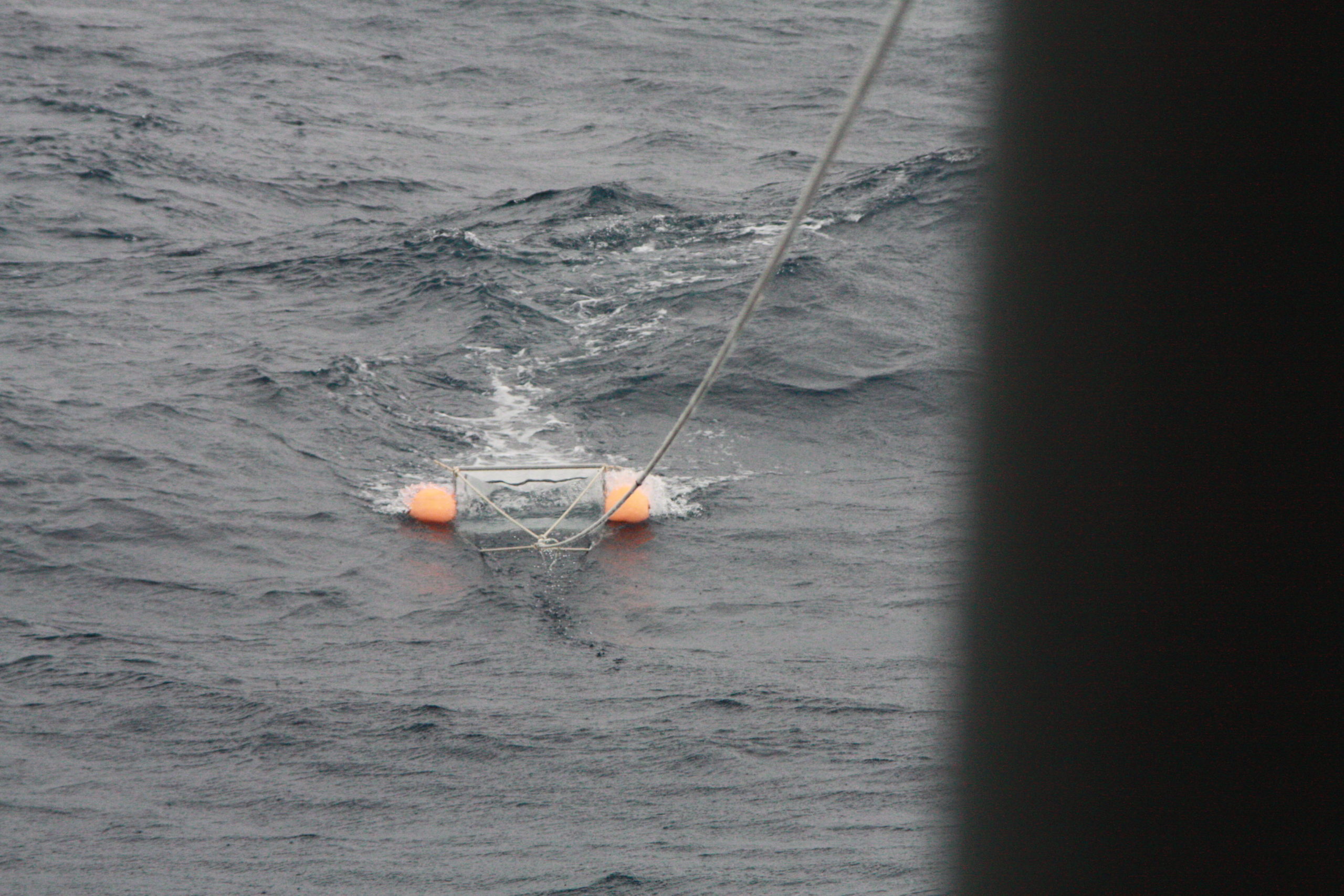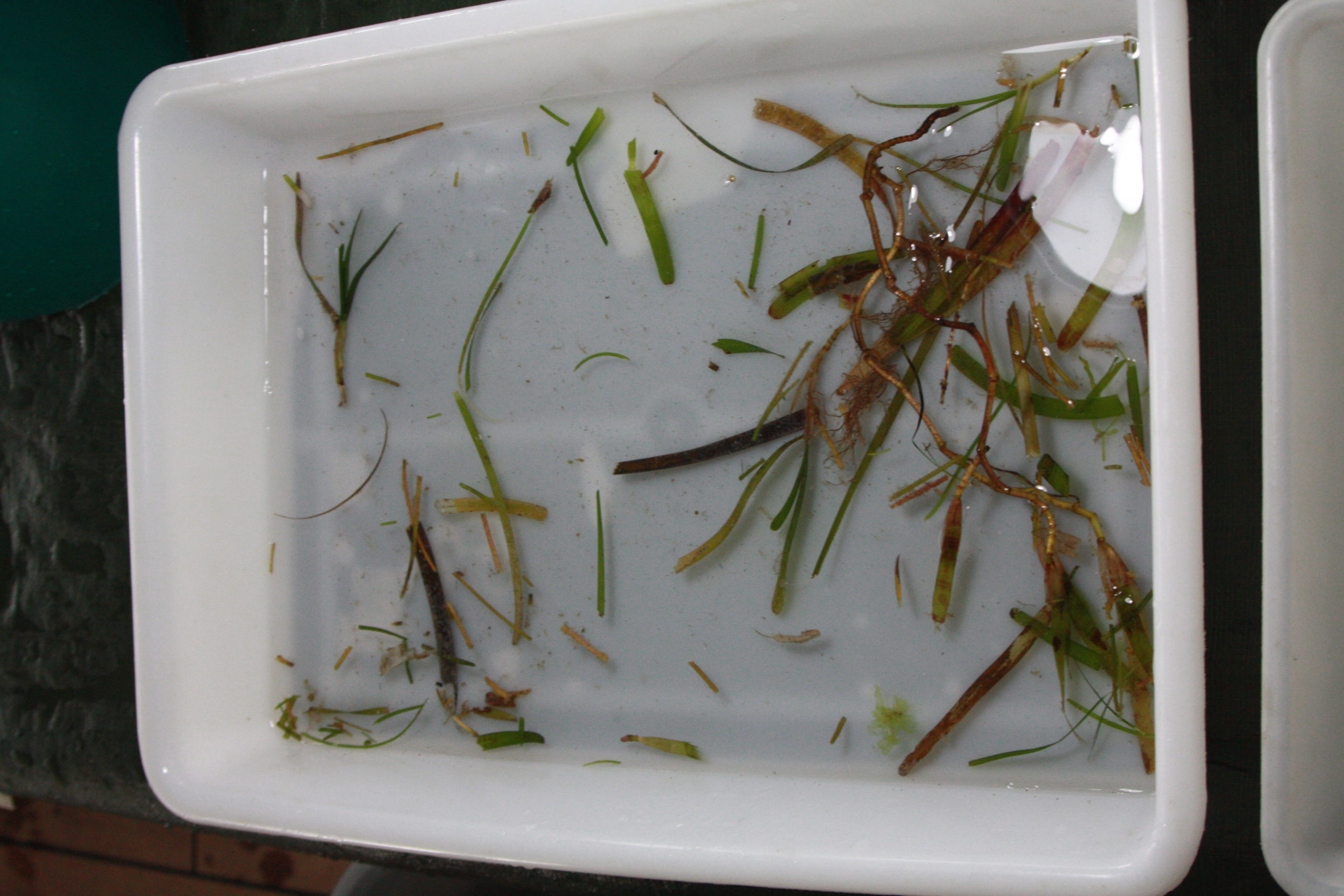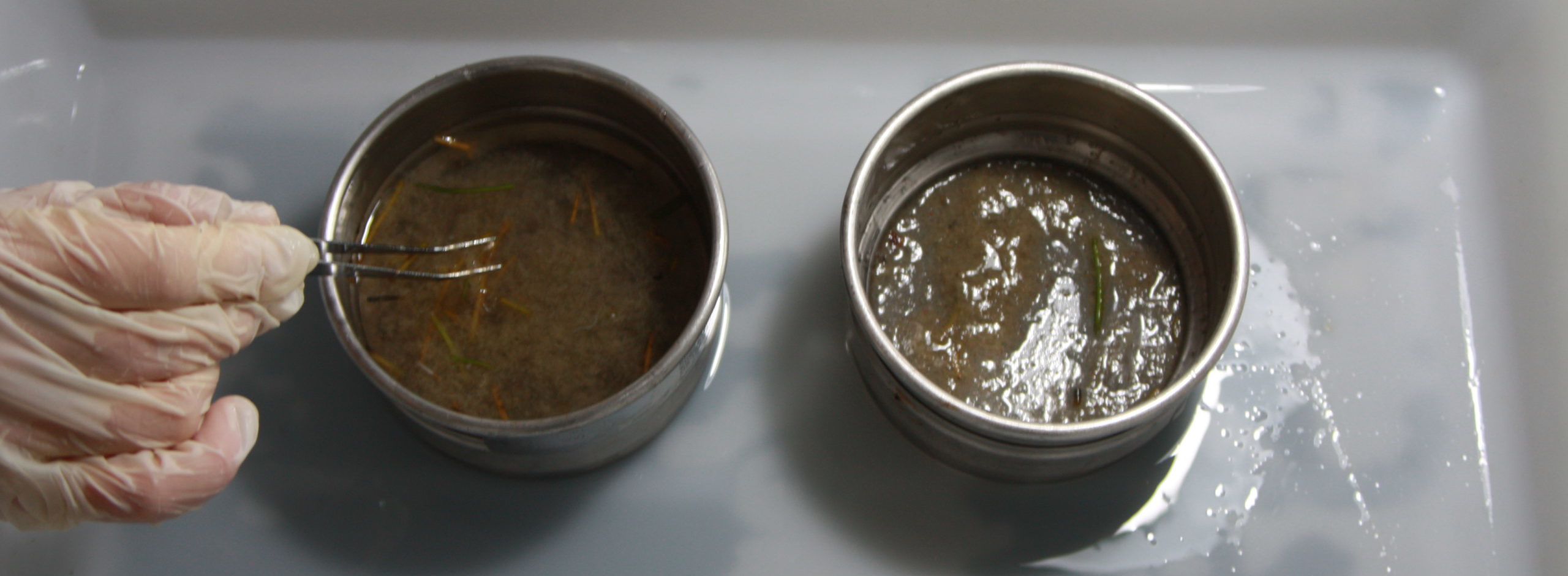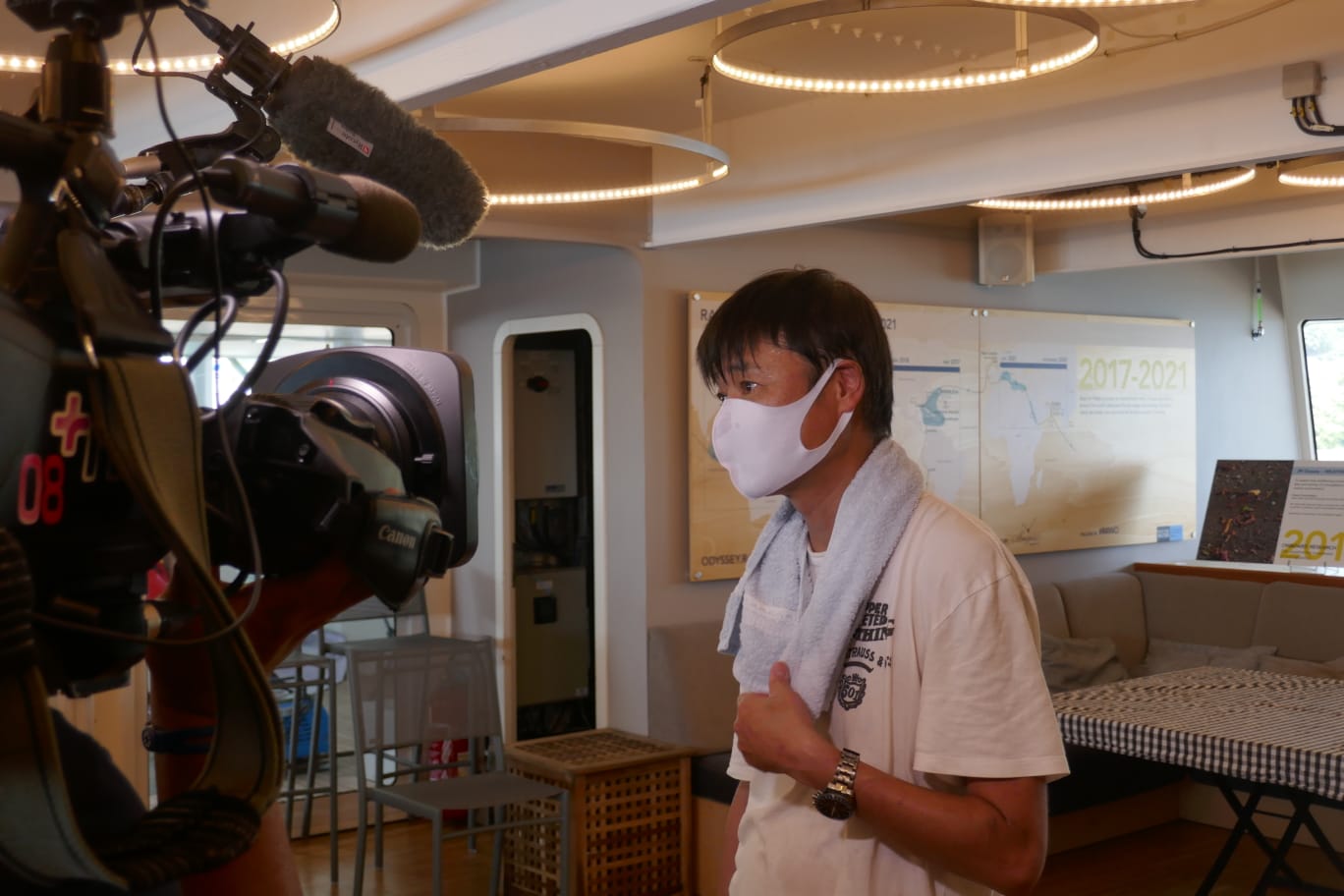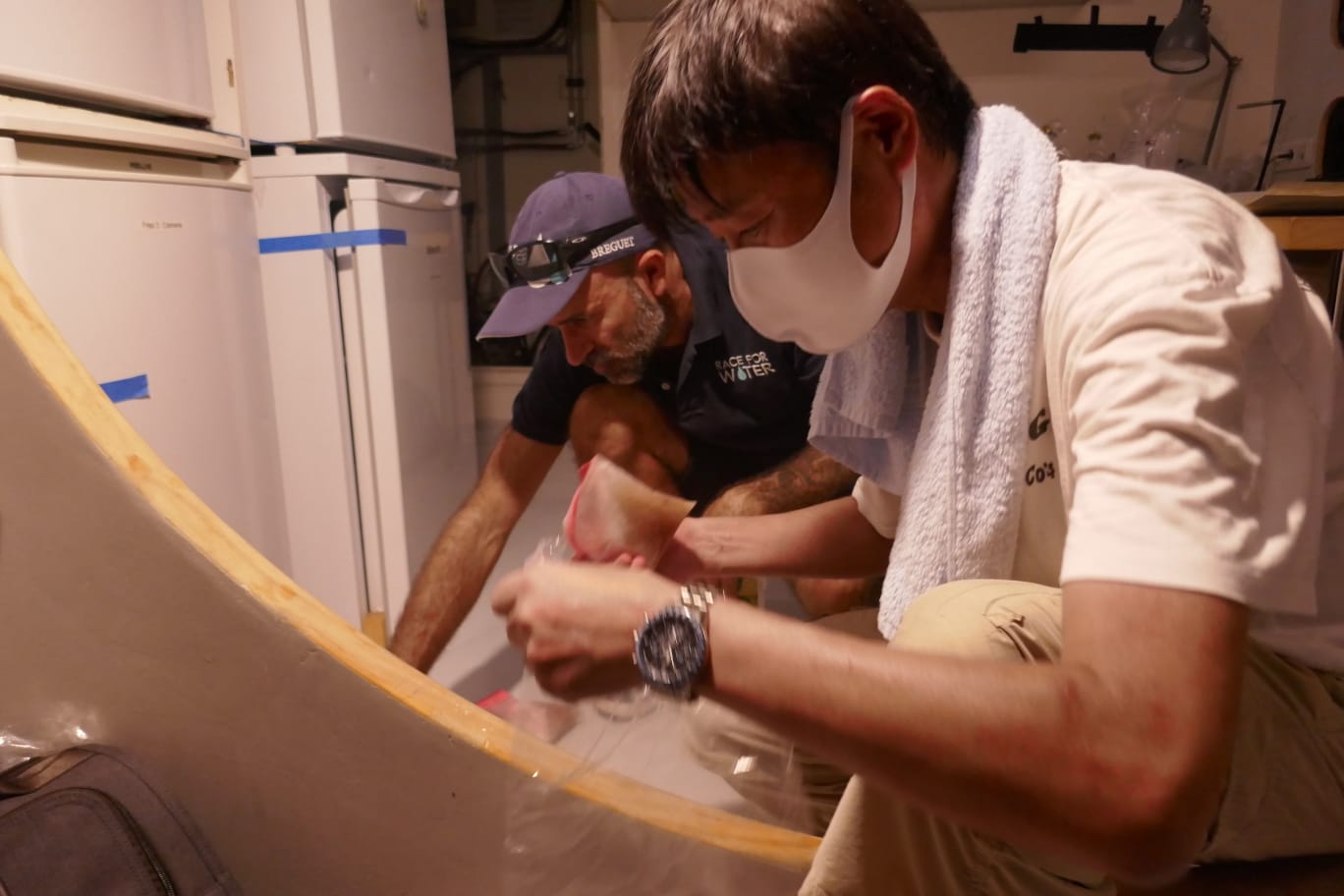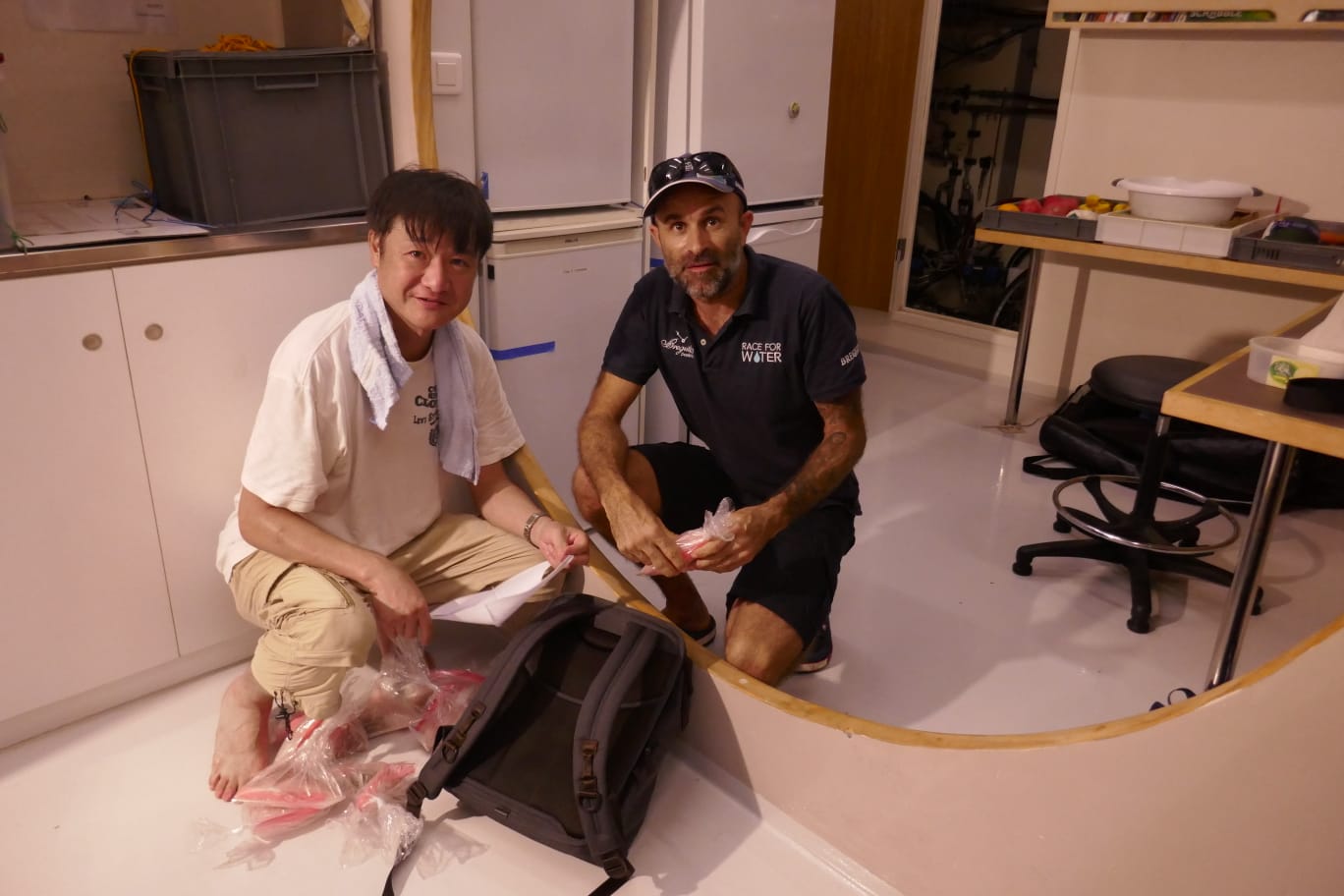General overview of the plastic pollution in Japanese surface waters
The picture shows microplastic observations conducted by Japanese researchers to date.
It includes a previous study in the East Asian Seas(1) (2014-2016) led by Prof Atsuhiko Isobe and his team, where they reported a hot spot with 1720000 pieces/km2. Our Race for Water team already met Prof Isobe in 2015 during our first Race for Water Odyssey stopover in Tokyo.
So when we knew we would pass by Japan during our second expedition, we took this the opportunity to offer to Prof Isobe from Kyushu University to collect some samples for him and therefore contribute to his work on plastic pollution in the Japan coastal waters especially in areas which haven’t been sampled yet.
The mission was supposed to be conducted by the Race for Water crew during their sailing session between the stopovers planned in different Japan cities (Ishigaki, Okinawa, Okinoerabu, Munakata, Oita/Beppu, Kure, Okayama, Kobe, Osaka, Nishinomiya, Toyoashi, Shimizu and Tokyo).
Due to the covid 19 pandemic only part of the schedule could be done but 14 samples were successfully collected.
Source: Picture kindly provided by Prof Atsuhiko Isobe
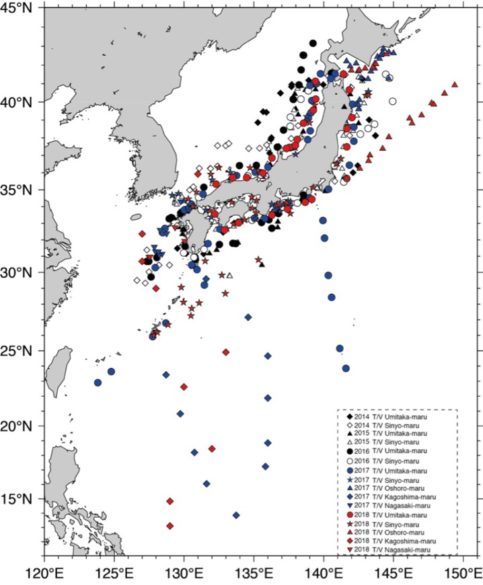
Scientific Protocol
The Race for Water crew followed the specific guidelines of Michida et al, 2019(2) provided by Prof Atsuhiko Isobe for microplastic sampling at sea surface:
- Deployment of the manta net out of the wake zone, at least 20 m away from the back of the Race for Water Ambassador vessel, at a mean speed of 2-3 knots for 30 min. The Manta net has a mesh size of 300 μm and a mouth opening 70×40 cm.
- Writing down the initial GPS coordinates (longitude and latitude) and initial time in the data sheet.
- During the transect, the crew reported the speed trough water (STW) each 3-5 min during the sampling. This allow to measure the seawater volume passing through the net during the transect. Besides the crew took photos of the net to show the tow immersion during the sampling.
- After 30 min of sampling, final GPS coordinates, the length of the route and the average boat speed was written down into the data sheet.
- The net was lift out of the water and rinsed with seawater after every tow to ensure that all material collected in the net is transferred into the cod end (located at the end of the net, picture in the top right). The net and cod end was rinsed from the outside to prevent contamination.
- Once in the wet laboratory onboard, the crew safely removed the cod end and sieved the sample in the code end through a 300 μm mesh size sieve. At this step, the teams have already been able to observe with the naked eye several plastic particles including polystyrene beads.
- The content of the sieve was then transferred into a sample bottle and preserved in the fridge using a funnel, tap water and 70% ethanol. The use of 70% ethanol (or formalin) is important to preserve the sample as it discolor the organisms and colors plastics making it easier to find during microscope analysis.
Besides, to make sure about the clean process of this protocol, blank samples were realized using the same equipment but without it having touched the water.
The following metadata were also carefully noted over the course of towing at every stations:
- wind direction and speed (Beaufort scale should be less than 3)
- significant wave height (should be max of 0.5m)
- sea surface temperature
- current direction and speed (if possible)
- state of floating debris on the sea surface (large floating debris, drifting algae, etc.)
Data and study results
All the microplastics samples collected by the Race for Water crew in the coastal waters of Japan were transmitted to Prof Atsuhiko Isobe for further analysis in his laboratory. Prof Isobe followed the guidelines of Michida et al, 2019(2) and processed the following analyses:
- Preprocessing for analyses (biological digestion, density separation, sample splitting)
- Counting and measuring sizes of particles,
- Identification of the particles and studies
All the data collected during the sampling are available here.
Prof Atsuhiko Isobe reported his results in a document available here.
(1) – Isobe et al., 2015, East Asian seas: A hot spot of pelagic microplastics. Marine Pollution. Bulletin 101, 2, 618-623. https://doi.org/10.1016/j.marpolbul.2015.10.042
(2) – Michida, Y., et al. (2019). Guidelines for Harmonizing Ocean Surface Microplastic. Monitoring Methods. Ministry of the Environment Japan, 71pp.
Thank to our mission partners :

